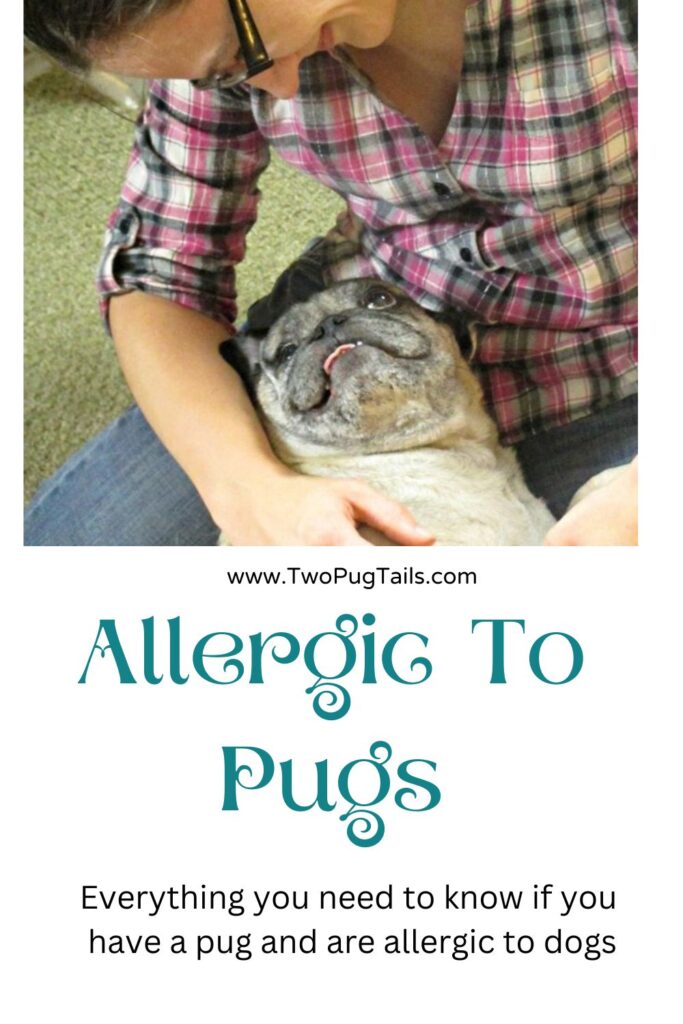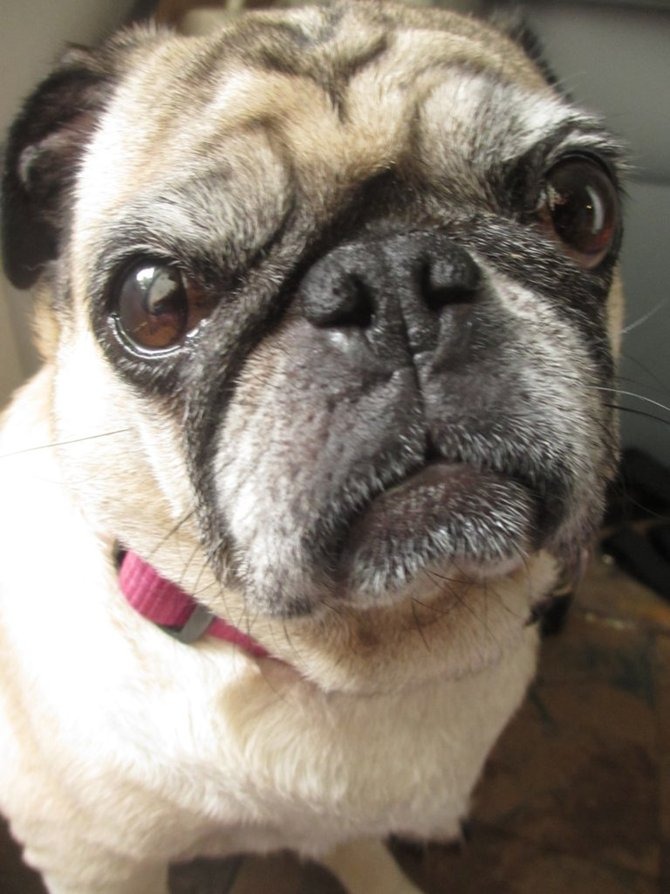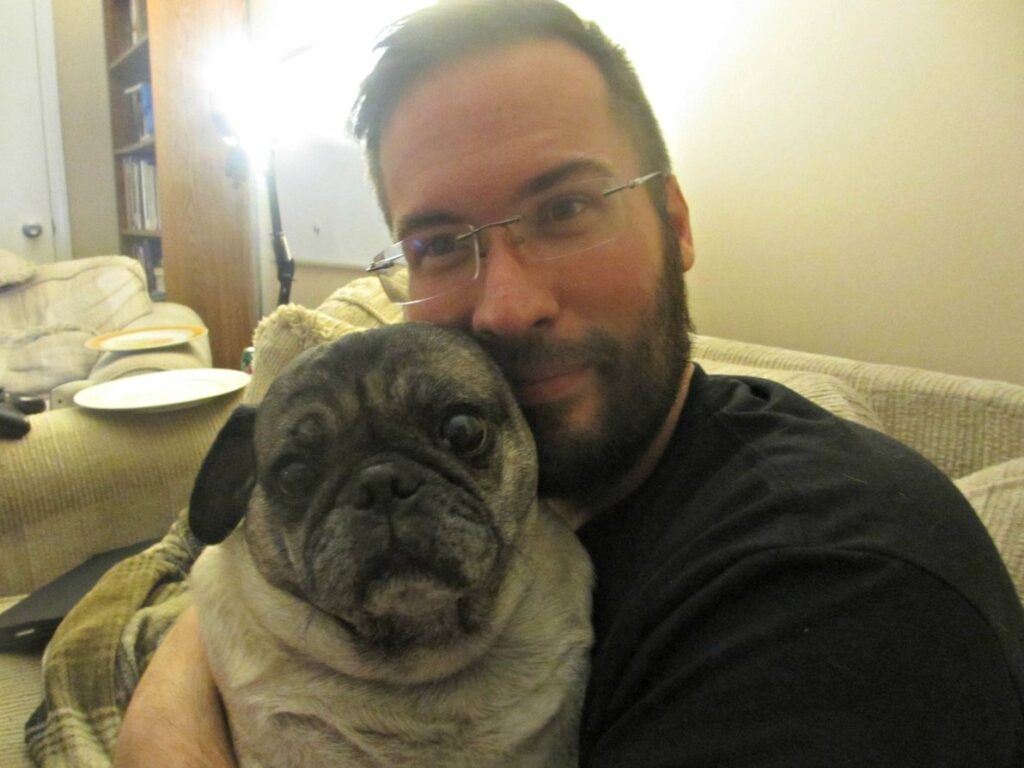
Do pugs cause allergies?
Do pugs cause allergies?
Pugs can definitely cause allergies in people sensitive to dogs. Their cute wrinkled faces shed dander that contains proteins which can trigger allergic reactions. If you experience symptoms like sneezing, itchy eyes, runny nose, coughing, or skin irritation around pugs, you likely have a dog allergy.

What allergy symptoms you may experience around a pug
Some common allergy symptoms from exposure to pugs include:
- Sneezing fits and nasal congestion
- Itchy, watery eyes
- Coughing or wheezing
- Hives, eczema, or skin rashes after contact
- Headache and fatigue
- Stuffy or runny nose
- Postnasal drip or sore throat
If you experience any of these symptoms when exposed to pugs, your body could be reacting to their dander, saliva, or urine. Pay attention to when symptoms appear to identify the allergy trigger.
Why Are Pugs More Allergenic Than Other Dogs?
Pugs tend to be more allergenic than many other dog breeds for a few reasons:
First, they shed a lot year-round. The constant supply of dander floating around contains allergy-causing proteins. Second, pugs have lots of wrinkles and folds in their skin which trap dander, saliva, and other allergens. When the pug moves, these allergens get released into the air. Finally, pugs produce a type of saliva protein that is extra allergenic to some people.
Common Pug Allergens
The most common pug allergens are:
- Dander – Microscopic skin flakes shed by pugs contain allergy-triggering proteins.
- Saliva – Pug saliva contains proteins that cause allergic reactions in sensitive people when dried saliva is inhaled.
- Urine – Pug urine residue can trigger rashes or asthma symptoms when touched or inhaled.
Pug shedding and dander are unavoidable. But saliva and urine can be managed by quickly cleaning any messes.
Pug Shedding and Allergies
Pugs shed a lot, even more than other short-haired breeds. Their hair is very fine and gets everywhere. All this dander floating around is bad news for people with allergies.
Pug puppies actually shed less until their adult coat grows in around 6-12 months. But once mature, pugs shed constantly year-round.
To control shedding, brush your pug frequently with a rubber curry brush. Bathing and grooming help remove loose hairs as well. But there’s no way to completely eliminate pug shedding and dander.
Reducing Pug Allergens in Your Home
You can reduce pug allergens at home through cleaning:
- Vacuum frequently using a HEPA filter vacuum. Wash bedding on hot.
- Bathe your pug regularly to control dander.
- Groom wrinkles daily to remove trapped allergens.
- Clean surfaces, fabrics, flooring with allergen spray.
- Use air purifiers and change HVAC filters often.
- Don’t allow pugs on furniture or beds. Confine to non-carpeted areas.
But for severe dog allergies, removing the allergen source completely is the only way to find relief.
Pug Allergy Testing Options
Allergy testing can identify if you’re sensitive to pug allergens:
- Skin prick test – Pricks sample allergens into skin to check reaction.
- Blood test – Measures antibody levels against different allergens.
- At-home testing kits – Mail-order kits test for common allergens.
Testing can identify which proteins trigger your symptoms so appropriate treatment can be determined.

Medications and Treatments for Pug Allergies
If you suffer from pug allergies, these medications may help:
- Antihistamines like Zyrtec and Claritin block histamine reactions.
- Nasal sprays reduce congestion, itching, sneezing symptoms.
- Allergy shots over time can build immunity to specific allergens.
- Immunotherapy tablets place allergens under the tongue.
For mild cases, over-the-counter oral antihistamines may provide enough symptom relief. But severe allergies may need prescription medications or ongoing immunotherapy treatment guided by an allergist.
Tips for Managing Pug Allergies
If you can’t part with your pug, try these tips to manage allergies:
- Ask a non-allergic person to bathe and groom the pug weekly.
- Have someone else vacuum and clean the home. Wear a mask when cleaning.
- Use HEPA air filters in rooms the pug frequents.
- Crate train your pug or keep in one low-allergen room.
- Ask your allergist about allergy shots or medications.
- Get an air quality monitor to alert you to raise in allergens.
- Board pug or stay elsewhere during high allergy seasons.
Living with pug allergies takes diligence! Medications and strict cleaning regimens are musts.

Considerations for Allergic Families Looking to Adopt a Pug
If you have dog allergies but love pugs, consider:
- Meeting adult and puppy pugs to see if one causes less reaction.
- Trying a short foster period to gauge allergy response.
- Checking if allergies improve after months of exposure.
- Testing allergy levels to dander, saliva, urine separately.
- Looking into hybrid pugs with less allergenic coats.
- Seeing an allergist and preparing medications beforehand.
- Can you manage cleaning or have non-allergic people help?
- Is allergy suffering worth it for the joy of dog ownership?
Make an informed decision weighing allergy challenges against your desire for a pug.
Differences Between Pug Puppy and Adult Coat Allergens
Pug puppies under 6 months old shed little dander so may cause less reaction initially. But once their coat changes to the short, thick adult fur around 6-12 months old, year-round shedding amps up.
Puppies also produce less saliva as they chew and teeth less. So puppy licks may be less allergenic.
But long-term, adult pugs shed dander constantly and produce more saliva. Allergy suffers reacting to an adorable pug puppy may find allergies get much worse as pup grows up.
Low-Allergen Pug Breeds and Mixes
No dog is completely non-allergenic. But some pug mixes and breeds may be better for allergy sufferers:
- Puggles (Pug + Beagle) have slightly longer fur that traps less dander.
- Chugs (Pug + Chihuahua) have less wrinkly skin.
- Black pugs shed less than fawn pugs (but still shed plenty!)
- Very light shedding breeds like Poodles mixed with Pugs may help.
Talk to reputable breeders about parent dogs’ allergen levels. But remember mixes can inherit any trait, so no guarantees.
If you suffer from pug allergies, I hope these tips help you manage exposure and find some relief! Let me know if you would like me to modify or expand upon any part of this post. I’m happy to refine it to match your voice and publishing needs.

Leave a Comment